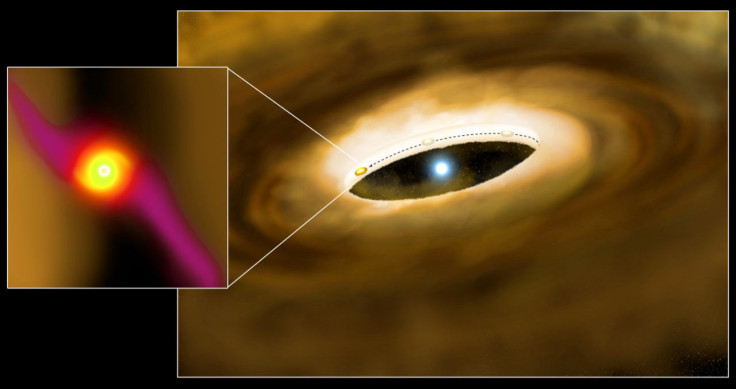Astronomers Witness Birth of Planet Three Times the Mass of Jupiter

An international team of scientists have discovered a new extrasolar planet forming over 300 million light years away from Earth, while studying the area around a "Herbig Be" protostar called HD 100546.
The team, including researchers from the US Naval Research Laboratory (NRL), were examining the protoplanetary disk - the surrounding material orbiting a newborn star from which a planetary system can form.
Studying a decade's worth of data from the Gemini Observatory of the Very Large Telescope at the European Southern Observatory in Chile, the astronomers were looking at warm gas within the disk using spectro-astrometry, to examine how molecular gas moves around the star.
The team noticed an "extra" source of gaseous emissions from carbon monoxide molecules that the scientists could not explain, and noted changes in the position of the gas over time.
While looking at observations of the star over the years to track the position and velocity of this extra gas, they discovered that the gas was frequently orbiting the star. According to the team, the evidence suggests they are observing the hot gas that shrouds a very young planet.
"These results provide a rare opportunity to study planet formation in action," said John Carr, of the NRL, as quoted by Headlines and Global News.
"Our analysis strongly suggests we are observing a disk of hot gas that surrounds a forming giant planet in orbit around the star," he added. "While such circumplanetary disks have been theorized to surround giant planets at birth and to control the flow of gas onto the growing planet, these findings are the first observational evidence for their existence."
If the observations are correct, the team are witnessing a planet in the midst of its formation.
Using modeling, the team were able to confirm their hypothesis - and believe the planet could be a "gas giant about three times the mass of Jupiter".
The team plans to monitor the planet and gain more information about the circumstellar disk from which it is believed to have formed.
According to the scientists, the baby planet will be hidden by the protoplanetary disk in two years' time and will reappear around 2030.
The finding may reveal more about the way planets in our own solar system developed, Sci-news.com reported.
The research was published in The Astrophysical Journal.
© Copyright IBTimes 2025. All rights reserved.






















